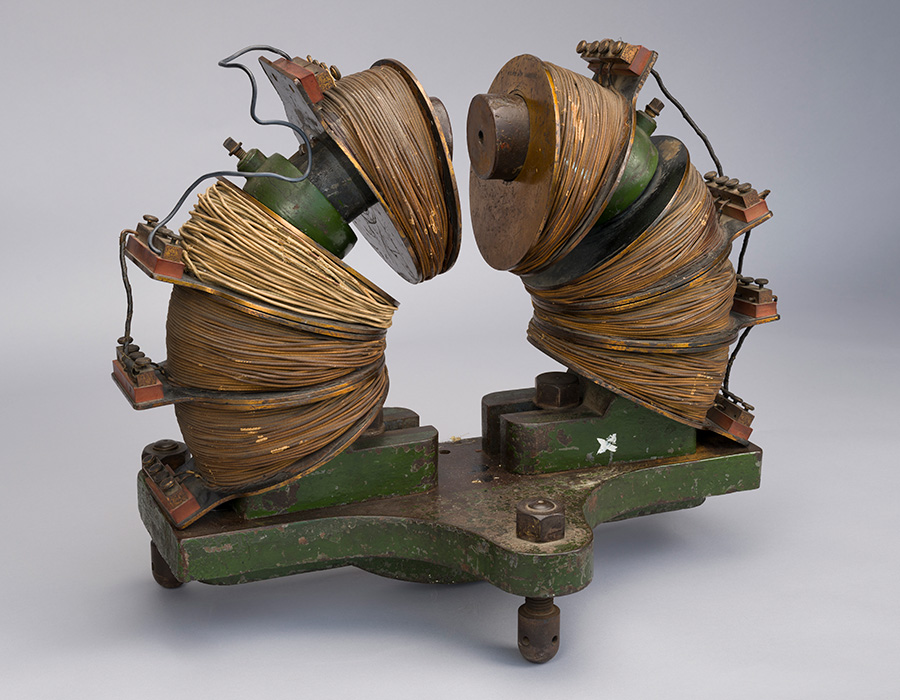The Physics Collection demonstrates a history of ground-breaking technologies developed at the University of Birmingham over the last 130 years. It also reflects the parallel progression in the teaching of physics during this period.

Electromagnet for original cavity magnetron, W. G. Pye & Co Ltd, 1940
The School of Physics and Astronomy has a rich history of research excellence dating back to its early days, and this is evident in the collection. For example, it includes objects connected to John Henry Poynting's 1893 measurement of the gravitational constant, and objects associated with Sir Oliver Lodge, the University's first Principal and a physicist who played a key role in the development of wireless telegraphy (early radio).
Holdings of international significance relate to mid-20th century and wartime technological developments including the cavity magnetron, the basis of radar which later formed the heart of microwave ovens and one of the world’s first proton synchrotron accelerators developed at the University in the 1950s and 1960s, an early precursor to the Large Hadron Collider at CERN.
For further collection history, see our Collections Development Policy.
A significant proportion of the collection is on display in the School of Physics and Astronomy. Key stories can also be explored within A History Through Objects: Research and Innovation at the University of Birmingham.